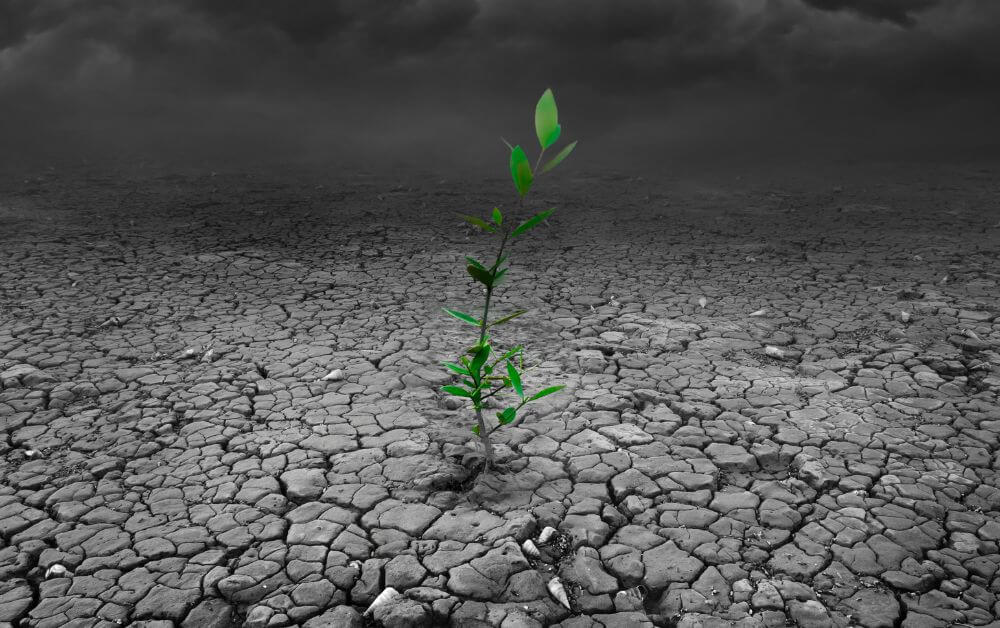Today’s insights are brought to you by my colleague and futurist, Graeme Codrington.
It goes without saying these days that we are facing disruptive times. It feels as if politics and economics especially are more volatile than they’ve been in a while, with politicians not instilling much hope and markets struggling with uncertainty, complexity, and constraints. People everywhere are struggling, and organisations are not quite sure of their approach to the future.
We need to make sure we are focusing on the things that will build a solid foundation for whatever the future holds. Our research shows that in addition to all the plans and strategies you have in place for the next few years, there are four key characteristics of organisations and teams that do better during disruption, even thriving while others falter:
- See the future so that we can anticipate disruption and thrive
Surprises are wonderful for birthdays and special occasions. But surprise is not a great business strategy. We need to remove the element of surprise as much as possible by building into our teams the skills, tools, and mindsets that stretch strategic imagination and help people think about what happens after what comes next.
This involves spending time with our teams – on a regular basis – looking at potential disruptors and shifting to an opportunity-driven mindset, moving beyond the fear of change and crisis response, into a mentality of excitement, confidence in the future, and thriving. Forewarned is forearmed, as they say, and we need to create times for every team member to look ‘beyond the horizon’ on a regular basis – it really does help to change our views of current reality when we do this properly, with intent and underpinned by optimism.
To do: Schedule regular slots in your team meetings to look at future scenarios (far distant as well as just beyond your current planning cycle), ask “what if” questions, and encourage experimentation.
You can use our “News bulletins from the future” that our team designed for you, and your team to look at scenarios of how the future might look. Grab this one for free here to try with your team.
- Be prepared for whatever might happen
As much as we must attempt to anticipate the future, we do realise that anything is possible. And so, we must simultaneously prepare ourselves for unexpected change, new ideas, and disruption as and when it happens. Innovation in the 2020s is not merely about new products, services, and markets, but rather it is about our ability to reinvent our business models themselves and build adaptability into our DNA.
To do: We need to move beyond mere resilience and agility to being antifragile: organisations, teams, and people who get stronger and gain from disorder, uncertainty, and chaos. Research and discuss antifragility with your team.
- Develop your people and teams for the future of work
We say that “our people are our most important asset” – now it’s time to prove it.
More than ever before we need to invest in building future workplaces, spaces, and approaches that maximize people’s ability to deliver peak performance. This goes well beyond considerations of efficiency and productivity, to a focus on meaning, outputs-driven approaches, and engagement.
In many organisations it will require significant shifts in people policies, management styles, and leadership frameworks. Failure to make these shifts will see your best and brightest staff leaving first.
To do: The obvious starting point at the moment is to embrace hybrid working fully. The office is a tool, not a destination, and should only be used when it is the best tool for the work that has to be done. Also shift, as much as possible, to an outputs-driven working environment that prioritises autonomy rather than control.
You can download our team’s latest research on Healthy Teams in a Hybrid World here.
- Ensure that your leaders are future fit
If we are right about all the changes coming in our context and our organisational design, then our leaders are going to have to change – quickly. We need leaders who give control to their teams, who invite learning, are better at asking the right questions than giving answers, are willing to experiment and comfortable when some of them don’t work, and who demonstrate adaptive intelligence in everything they do and how they enable others to do the same.
To do: Develop your understanding of Adaptive Leadership, and apply its core principles: especially the understanding of the difference between technical and adaptive challenges, and the role of leaders in helping their people overcome their biggest challenges and thrive.
What to do when it rains
The legendary F1 Grand Prix racing driver, Ayrton Senna was one of the greatest ‘wet weather’ drivers of all time. He loved driving in adverse conditions, saying: “You cannot overtake 15 cars in sunny weather, but you can when it is raining.”
If you’re focusing on the four things above, you’ll similarly be ready for whatever comes your way, and maybe even develop quiet anticipation of disruption that you can harness to build resilience, become antifragile and unlock innovation in your organisation and team.
Graeme Codrington is a futurist and scenario planner with TomorrowToday Global, a strategic insights firm focused on the future of work. He helps organizations understand the forces that will shape our lives in the next ten years, and how we can respond in order to confidently stay ahead of change. Graeme can be contacted at [email protected]
For the past two decades, Graeme has worked with some of the world’s most recognized brands, travelling to over 80 countries in total, and speaking to around 100,000 people every year. He is the author of 5 best-selling books, and on faculty at 5 top global business schools.


